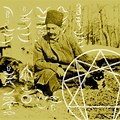








How an anti-Semitic ‘fake news’ conspiracy drove mass murder in Franco’s Spain
The horrors of the Second World War have tended to overshadow the awfulness of the conflicts that preceded it in Abyssinia, China and Spain. No one knows for sure how many died in the Spanish Civil War of 1936-1939, but half a million is a reasonable estimate.

What is clear is that much of the killing was done off the battlefield. Franco’s rebels executed at least 130,000 opponents, the Republicans maybe 50,000. Most historians have tended to characterise the government forces’ atrocities as largely unofficial and spontaneous, while the Nationalists were following a systematic extermination programme to “cleanse” Spain of its internal enemies as a necessary prelude to an era of regeneration.
To prepare the ground the rebel leaders had to persuade their followers – and themselves – of the malignity of their opponents. Instead of being fellow Spaniards with a different political outlook, they were demonised as the foot soldiers of evil conspiratorial forces who wanted to abolish their religion, steal their property and destroy their culture and traditions. The conspirators were the usual early 20th-century suspects: a diabolical alliance of freemasons, Jews and bolsheviks.
Paul Preston has spent a lifetime studying the war, and in this deeply researched and revealing book he turns his attention to six men who propagated the ideas powering the Francoists’ annihilationist tendencies. His dirty half-dozen includes big names like General Emilio Mola, who directed the anti-government plot and who set the tone for what followed by officially sanctioning terror tactics to “eliminate without scruples everyone who does not think as we do”.
Preston also introduces us to some less well-known and extraordinarily unpleasant characters, among them Gonzalo de Aguilera, an erudite, aristocratic landowner and cavalry officer who worked as a liaison officer with foreign media during the war. Aguilera was educated in England by Jesuits, passing through, I was startled to learn, my old school Wimbledon College before going on to Stonyhurst.

He was regarded by some of his charges as a bit of a character, given to regaling them in the bar with his hair-raising views. A pet theory was that Spain’s problems were all due to the foolish extension of mains drainage to the working classes. “Sewers caused all our troubles,” he told one correspondent. “Had we no sewers in Madrid, Barcelona, Bilbao, all these Red leaders would have died in their infancy.” Proper drains should have been “reserved for those who deserve them, the leaders of Spain, not the slave stock.”
The more perceptive hacks, such as Martha Gellhorn, understood that this wasn’t just provocation. Many Spanish landowners indeed regarded their peasantry as slaves and treated them with sadistic harshness. The rising assertiveness of the masses, peaking with the advent of the Republic, astonished and alarmed them. Who had put them them up to it? The answer was the “contubernio judeo-masónico-bolchevique” which Preston translates as “the filthy Jewish-masonic-Bolshevik concubinage”.
At first sight, this was going to be a hard message to sell. In 1936 there were barely 6,000 Jews in Spain and the Communist party was tiny. There were masons in high places, but their code of secrecy meant that no one knew who and how many. Franco’s propagandists had a natural ally in the Catholic church, which had waged a centuries-old war on freemasonry and linked Jews to Christ’s crucifixion.
One of the most effective purveyors of what Preston casts as an early example of “fake news” was a villainous priest, Juan Tusquets. He popularised the idea that the rebels were engaged in a crusade against a Republic which was, in fact, the enemy of Christian civilization, and, to cement the argument, he brought out his own edition of the Protocols of the Elders of Zion.

Despite having been exposed as a forgery by the London Times in 1921 and the Frankfurter Zeitung three years later, that tract was swallowed whole by many on the rebel side, including Franco. As with fans of the Protocols everywhere, newspaper revelations did nothing to shake their faith, being taken instead as confirmation of the conspirators’ power and reach. The truth didn’t matter much matter anyway. Like Josef Goebbels, Tusquets believed in the power of the big lie, accusing the moderate, piously Catholic President of the Republic, Niceto Alcalá-Zamora, of being both a freemason and a Jew.
The narrative spun by the nationalist theorists provided a justification for the rebels’ real concerns. These were summed up by John Whitaker of the Chicago Daily News as “simple in the extreme. They were outnumbered by the masses. They feared the masses and they proposed to thin down the numbers of the masses.”
Nonetheless the hatred felt towards the phantom “contubernio” was real and the venom spread by the propagandists lingered in the national bloodstream. Franco’s victory in 1939 was followed not by reconciliation but by an orgy of vengeance in which tens of thousands of freemasons and leftists were judicially murdered. Newspapers and books peddled anti-Semitic themes right until Franco’s death in 1975 and post-war Spain was a safe haven for the likes of the Belgian fascist leader and SS officer Léon Degrelle.
Preston’s study is based on profound knowledge but also shrewd human understanding. As well as exposing the pyschic underpinnings of the Spanish warm it also helps us see the world war that followed for what it was: the continuation and culmination of long-brewing political and cultural pathologies.
Architects of Terror: Paranoia, Conspiracy and Anti-Semitism in Franco’s Spain is published by HarperCollins at £30. To order your copy for £25 call 0844 871 1514 or visit Telegraph Bookshop
Patrick Bishop’s new book Paris ’44 will be published by Penguin next year
Articles-Latest
- Koran burning conviction sparks fury as blasphemy law 'returns to UK'
- Robert Francis Prevost - Pope Leo XIV
- Pope Francis' death follows recent health challenges. Here's what we know about how he died.
- Easter April 2025 - international Celebrations
- The Rule of the twelve psalms -Worthy is the Lamb
- Religion in Africa Before Christianity and Islam
- 6 The Origin of Yahweh
- Dumo Di Milano
- What Did the Crow Tribe Believe In: Discover The Beliefs!
- 7 Reasons Historic Christianity Rejects the Book of Enoch
- 8 Breathtaking Mountain Monasteries Around the World
- Ethiopian Bible is oldest and most complete on earth
- Muhammad Muhammad was a prophet and founder of Islam.
- World Day of the Poor – SVP Christmas Campaign 2024
- Pope Francis to open 5 sacred portals on Christmas Eve — for a ritual that’s never been done before
- The 144,000 in Revelation
- Over 73 dead bodies 'used for meditation', 600 crocs in a pond, found in two Thai temples
- Occultism: Western Occult Tradition
- What is a Mudra
- Blood Sacrifices: Ancient Rituals of Life and Death
Articles-Most Read
- Home
- Let There Be Light
- Plants that feel and Speak
- The Singing Forest
- The Singing Forest-2
- Introduction
- Meditation
- Using Essential Oils for Spiritual Connection
- Heaven Scent
- Plants that Feel and Speak-2
- Purification
- Making the Spiritual Connection
- Anointing
- Essential Oils: The unseen Energies
- The Sanctity of Plants
- The Aroma Of Worship - Introduction
- The Aroma Of Worship-Foreward
- Methods Of Use
- Spiritual Blending
- Handling and Storage






